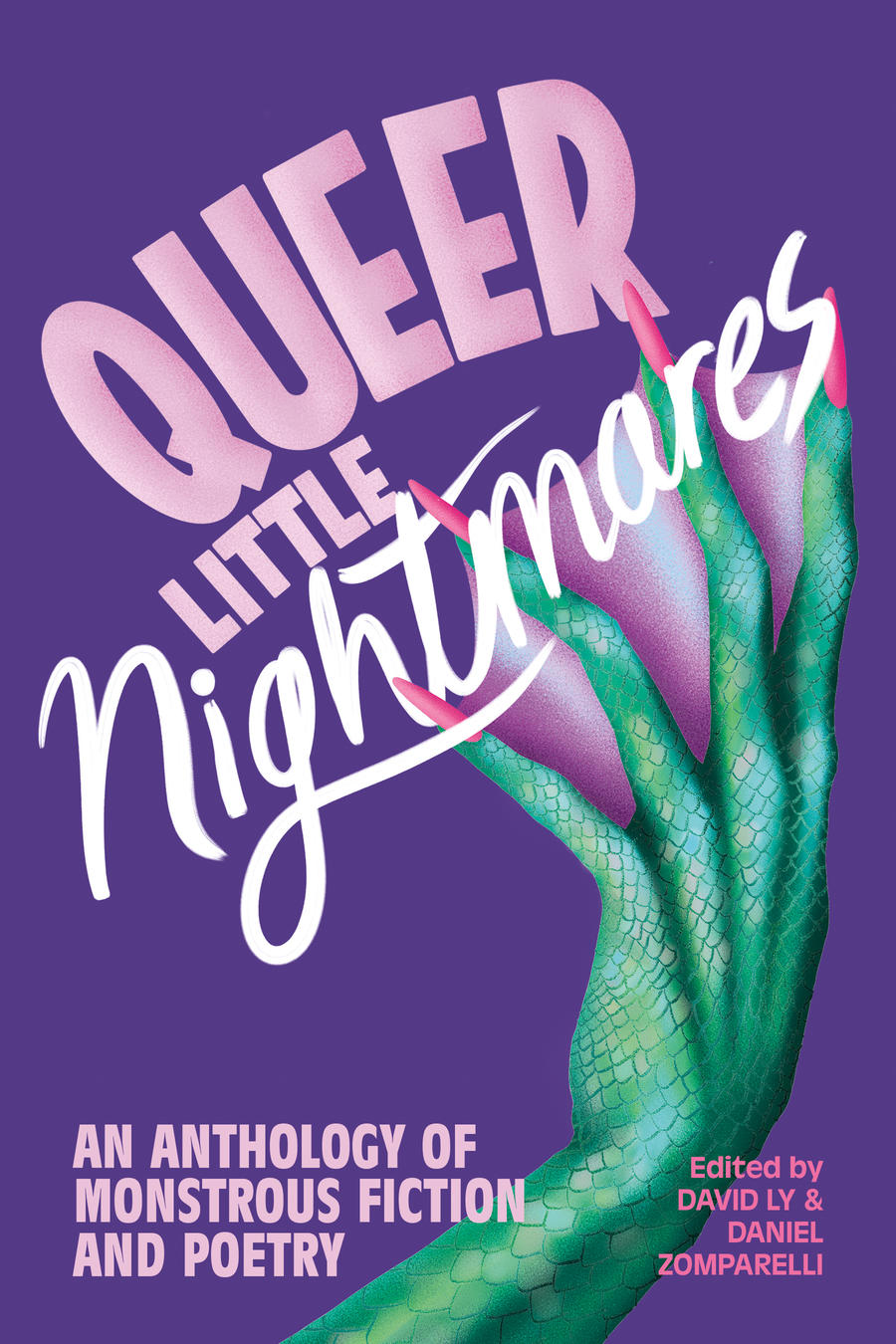I loved summer camp as a child — long days spent in the sun and tan lines from Keens worn too many days in a row — but I always dreaded the nights. It would start with a simple proposition from one of the girls in my bunk: “does anyone want to hear a scary story?” and then devolve into a full-blown tale telling session leaving me unable to sleep. The fear I felt hearing those stories mixed with my general discomfort at being assigned to live in the “girls’ cabin” was a nauseating cocktail. At long last, David Ly and Daniel Zomparelli’s horror anthology, Queer Little Nightmares, let me in on all the fun. This collection perfectly captures the feeling of spooky stories told with only a dim flashlight for illumination — but now Bloody Mary is replaced by lesbian werewolves and wistful creatures from the black lagoon.
It’s common advice when crafting a monster story to not show your monster until the last second. Leave your audience seeing its shape only in shadows and flashes of claws, scales, and teeth — their imagination will fill in the gaps with greater horrors than you could dream up. The poetry and stories in this anthology utilize this advice to its fullest effect, representing queerness as that very thing which cannot be fully seen, understood, or depicted. In the collection’s first story (and one of my favourites), Amber Dawn’s “Wooly Bully,” we are never quite sure what we are “seeing” unfold. Two girls sent to a farm appear to be undergoing some kind of unearthly transformation as they fall for each other over a series of sticky summer nights. Yet, we, the reader, are denied any declaration of what these girls are turning into, only teased with cryptic messages in poetic lines such as, “a syrupy strand of bile yokes my mouth to the browning grass. / I’m on all fours. My fingers paw the ground.” David Demchuck’s delightfully frightening “Nature’s Mistake” employs a similar effect as we catch glimpses of a derelict fairground and come to meet the creature who dwells within it. The way these stories, and many more in this collection, deny their reader an explanation for their monsters and refuse description of these creatures is precisely why these pieces are queer little nightmares — they are full of wonderfully unruly bodies and lives which escape simple categorization. Every author in this collection harnesses the way in which queer experiences have been seen as monstrous in their denial of hegemonic ways of being, and transforms that into something powerful — given fangs and fur. It is a collection full of nuance with many pieces providing intersectional approaches to this theme of queer “monstrosity,” such Andrew Willmot’s “Glamour-Us”— a story I absolutely loved — which offers a poignant look at class and experiences of transness packaged up in a futuristic tale of biohacking.
Queer Little Nightmares is an excellently composed collection — there are stories in here that will thrill you, there are those which will chill you to your core and keep you looking over your shoulder (for scares, Levi Cain’s “Gruesome My Love” and Hiromi Goto’s “And the Moon Spun Round like a Top” are standouts), and there are those which might make you cry, such as Anuja Verghese’s “The Vetala’s Song” which had me weeping on a public bus. This collection takes the form of a menagerie of oddities, creatures, and strange things which go bump in the night, but unlike a freak show of yore, here it is the monsters who run the show. So do yourself a favour — grab a copy of Queer Little Nightmares, turn out the lights, hide under your covers with nothing but a flashlight and, as Zomparelli writes in the collection’s introduction, proclaim your love “for everything monster!”


